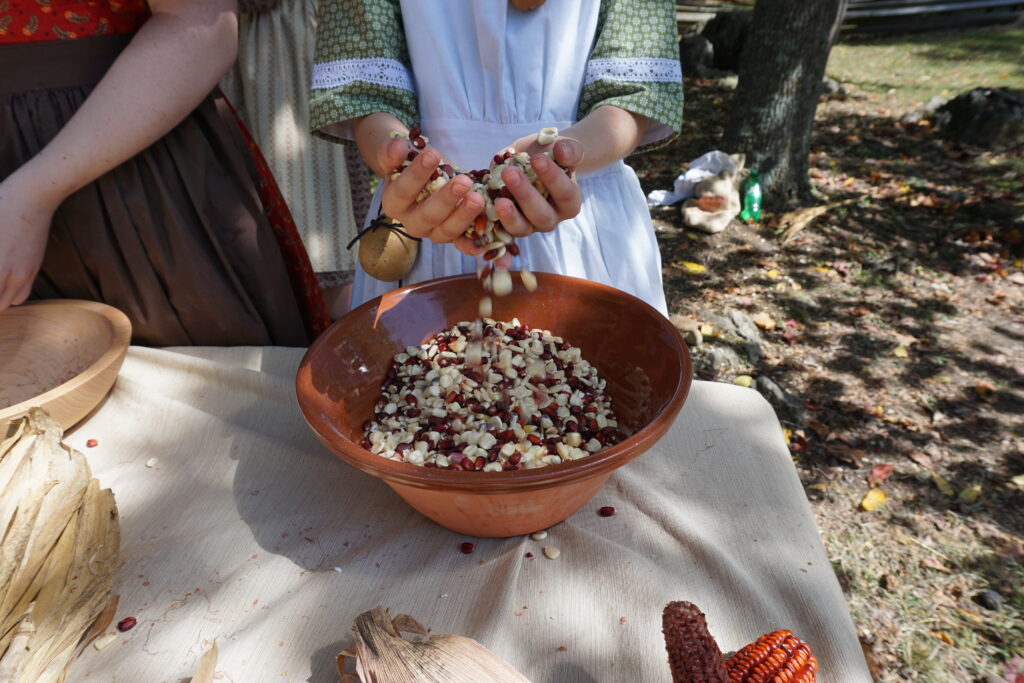
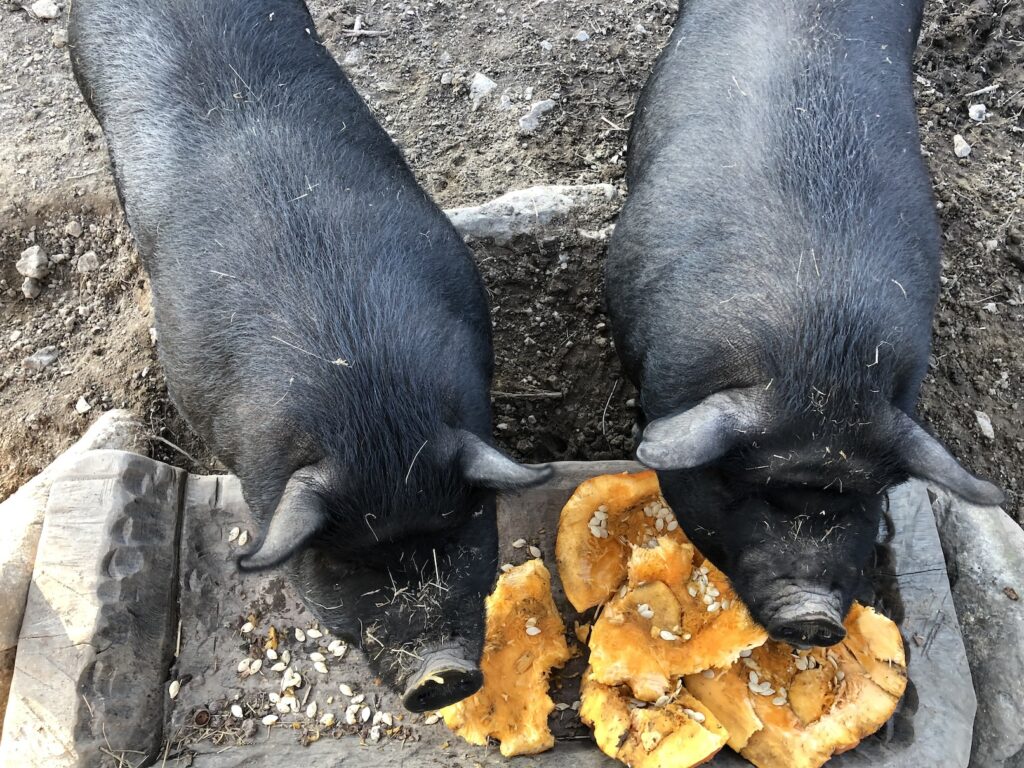
“The Hog and Hominy State”: This antebellum nickname for Tennessee was inspired by the two most important agricultural commodities in the state at that time—corn and pork—which made up a substantial part of the diet of the population and boosted the economy through commerce.
“Hog”
In the mid 19th century, Tennessee produced a massive number of hogs, which were often driven overland into the Carolinas or Georgia for sale. The mountains of East Tennessee proved especially conducive to hog rearing. In most cases, hogs were not contained for the spring and summer, but were allowed to free range in forests where they fed on roots and acorn mast until they were rounded up in the fall for fattening. At this time, they might be turned into fields of corn, cowpeas, or sweet potatoes to feast on unharvested crops and clean up debris. Some farmers “finished” their hogs in large pens, where they were fed dried corn and other high-energy fodder. When the weather was cool enough, hogs would be slaughtered and the meat cured for consumption throughout the year. Surplus hogs could be sold for cash. The cotton plantations of the Deep South relied heavily on the pork from these hogs to feed their vast enslaved labor force.
Pork was undoubtedly the preferred meat of Southerners. In his book, Hog Meat and Hoecake, historian Sam Bowers Hilliard calls the pig the “supreme food animal” of the antebellum South. He notes that the “southern agriculturist looked upon the hog as one symbol of his success, and pork was the food item he sought with more vigor than any other.” James Preston, who owned Exchange Place in the 1850s, no doubt felt this way. He recorded in his ledger book that he salted over 4,000 pounds of pork in December 1850.
“Hominy”
Along with hogs, corn was the most important agricultural commodity in antebellum Tennessee. Again the mountains of the eastern part of the state proved effective for growing this crop, which thrived in the climate and could be planted on the hillsides. The agricultural censes of 1850 and 1860 show that James Preston was producing about 3000 bushels of corn at Exchange Place during that time.
Corn was a very versatile crop and was used in numerous ways. Fresh or “green” corn was eaten only in the summer when it was in season. The vast majority of corn was dried and fed to livestock (like hogs) or ground into grits and meal for human consumption. Some was also used to make corn whiskey or moonshine. Corn shucks and cobs could be used as filling for ticks (mattresses), pipes, dolls and other toys, and even as toilet paper!
Europeans, of course, learned how to grow and prepare corn from Native Americans, who had, over centuries, converted the wild grass teosinte into maize. Foodways scholar Tema Flanagan notes that for these indigenous peoples “corn wasn’t just about food. As much as nutrition, corn offered mythological and spiritual sustenance. In many ways, corn (and the mythology surrounding it) explained the world—explained life itself—and answered all the metaphysical questions to which it gave rise. For the indigenous “people of the corn throughout the Americans, corn was origin story, goddess, mother.”
Most corn consumed by Native Americans was nixtamalized, a process that involves soaking the dry kernels in an alkaline solution until the hulls are loosened and can be easily removed. (Lye made from wood ashes or crushed shells or limestone was commonly used to provide the alkali.) The Powhatans called this, from which our term “hominy” derives.
Nixtamalized corn is easier to grind into flour/meal than hard, dried corn, which is probably why the Native Americans practiced it. Nixtamalation also allows for better absorption of niacin (vitamin B-3) by the body and thus staves off pellagra, a debilitating disease that can cause malaise, dementia, skin irritation, and oral sores.
Though Native Americans taught the technique to European settlers, it was not as widely adopted as it should have been. In fact, pellagra plagued the antebellum South where the standard diet of salted pork and un-nixtamalized dried corn caused widespread malnutrition, especially among the poor and enslaved. Many Appalachians, however, embraced the process. Well into the 20th century, mountain families would make gallons of hominy from corn grown in their fields and lye leached from ashes from their cabin fireplaces.
In the Foxfire Book of Appalachian Cookery, “Granny Gibson” remembers the process of preparing hominy:
People use to tie ashes and corn in a sack and boil them a pretty long time in an old iron pot. The water going through the ashes makes lye. That’s what makes the outer part of the corn kind of scale off, and what you have left is hominy. You just wash it and wash it to get the lye out, and then you put it back in the pot with just pure water and cook it until it gets tender. Keep adding water to it because it just keeps swelling. Then you take it out, put some grease in it and fry it. It takes all day to make it, but it was good.
There are many ways to cook and eat hominy. It can be eaten straight from the pot from which it was boiled or fried in a skillet like Granny Gibson remembers. (An apt name for fried hominy is “Hoppin’ Hominy” because it jumps around in the skillet as it cooks.) Hominy can also be ground into grits and used to make bread and griddle cakes. Hominy grits were often called “small hominy,” while whole kernel hominy was called “big hominy.”
At Exchange Place’s recent Fall Festival, the Eden’s Ridge Hearth Cookery Society and Exchange Place Junior Apprentices demonstrated the nixtamalization process and prepared dishes on the hearth inspired by Tennessee’s antebellum nickname, including fried country ham, hominy griddle cakes, “hoppin’ hominy,” Indian pudding, and Tennessee muffins.
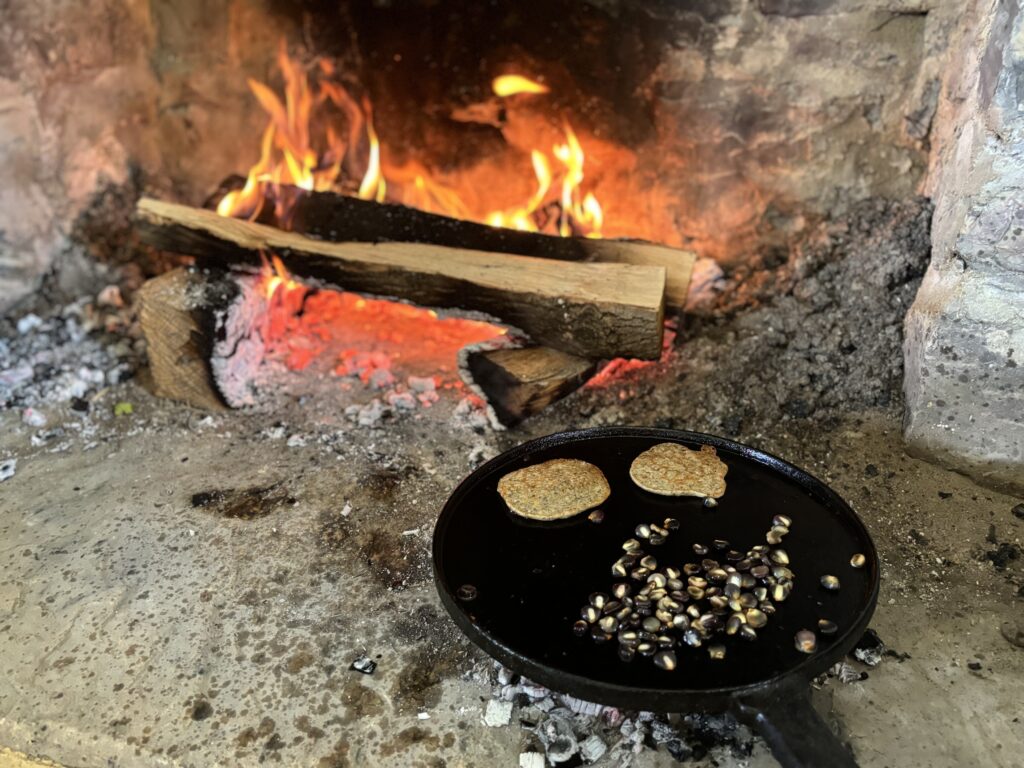
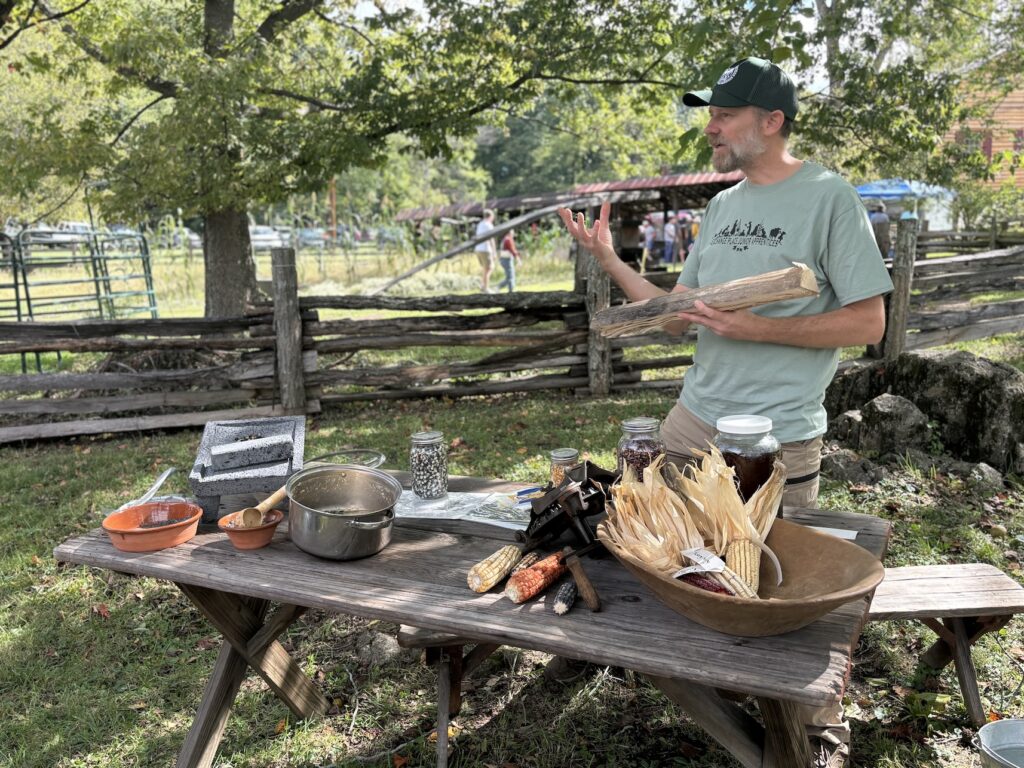
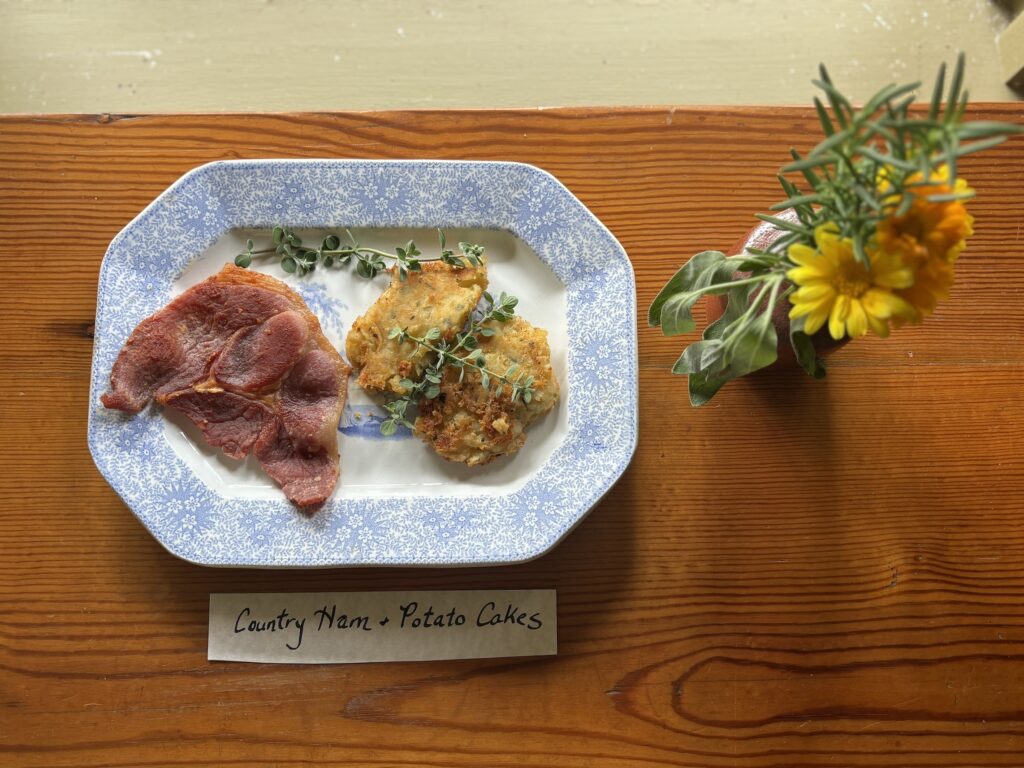
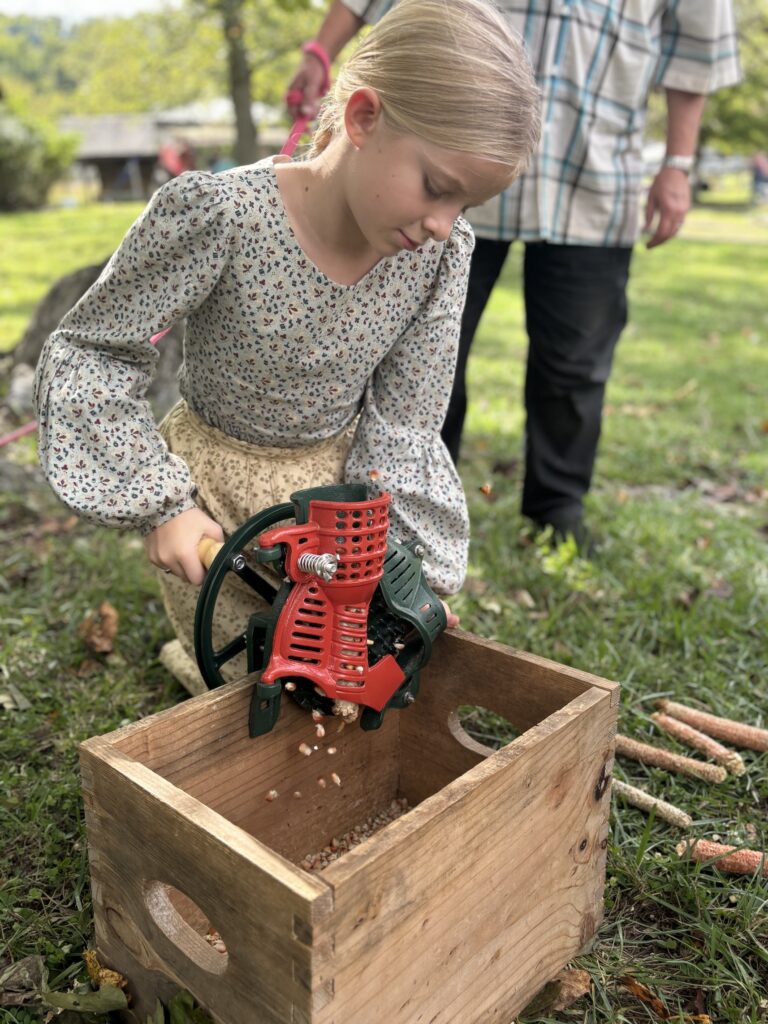

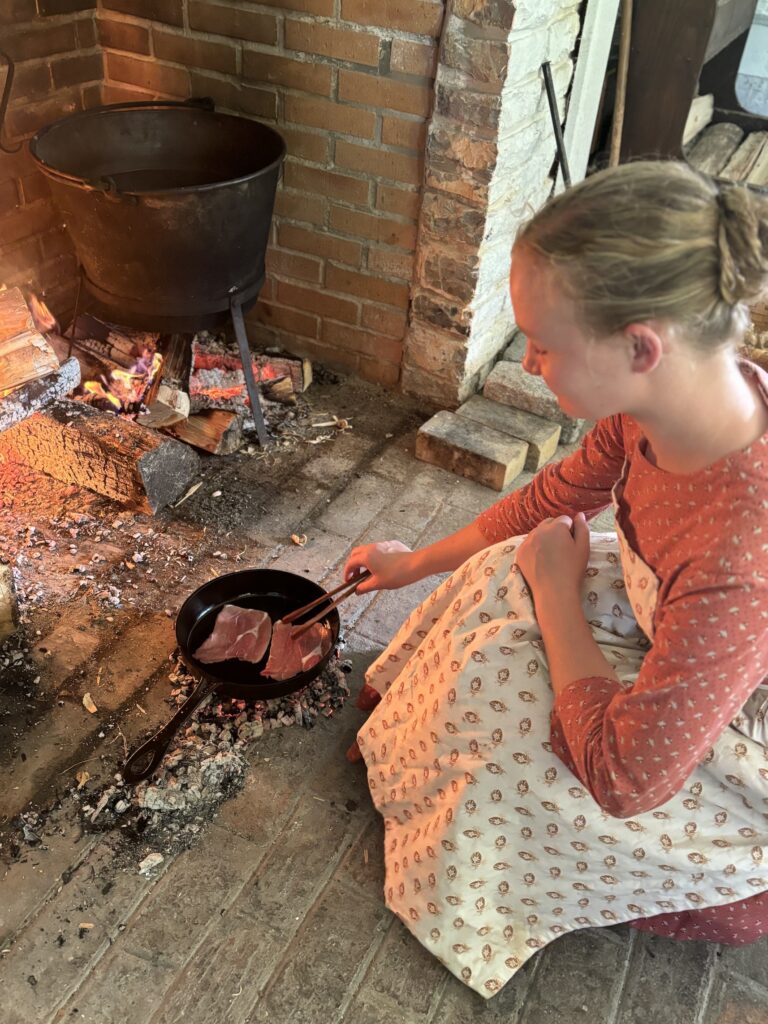
The mission of Exchange Place Living History Farm is to preserve and interpret the heritage of mid-19th century farm life in Northeast Tennessee. A private, non-profit organization, Exchange Place is maintained and operated primarily by volunteers and is supported by donations, fundraisers, memberships, and grants.

Exchange Place
4812 Orebank Rd,
Kingsport, TN 37664
423-288-6071